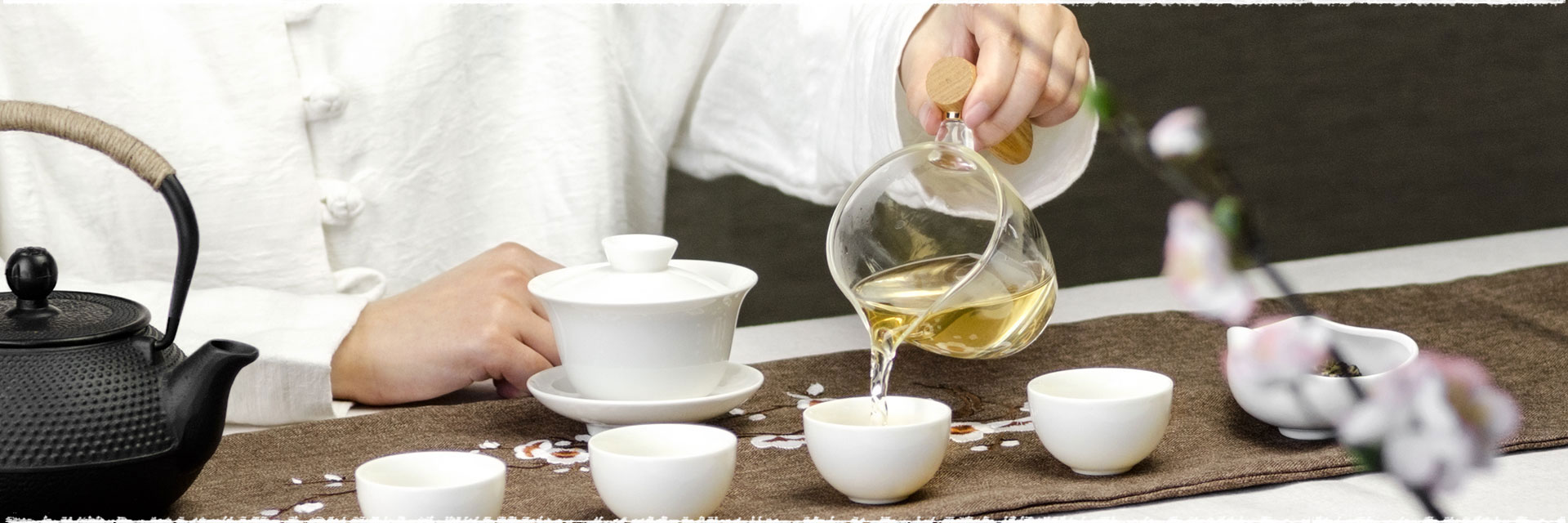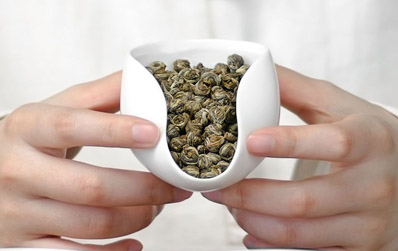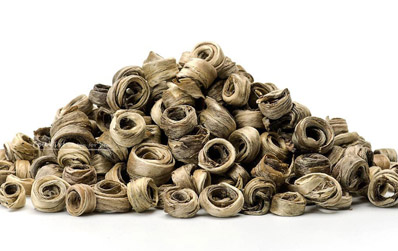Spring, is a season of recovery in nature, and we want to introduce a tea to feel the vigor and beauty of this season together. After comparing several different types of tea, we felt that no tea is more suitable for this season other than jasmine scented tea. Therefore, we’ve specially selected a jasmine tea from Guangxi Province to start this wonderful spring.
When it comes to jasmine, the first thing that came to mind was Hengxian, Guangxi, a city that enjoys the reputation of ‘the Chinese hometown of jasmine ’ , which began to grow jasmine plants as early as more than 400 years ago.

The jasmine flowering season in Hengxian runs from May to October each year, and it is still very technical when picking the jasmine flowers. The jasmine flower is relatively small and it must be picked before it blooms, so that these flowers will release a strong aroma during the process of making jasmine scented teas.
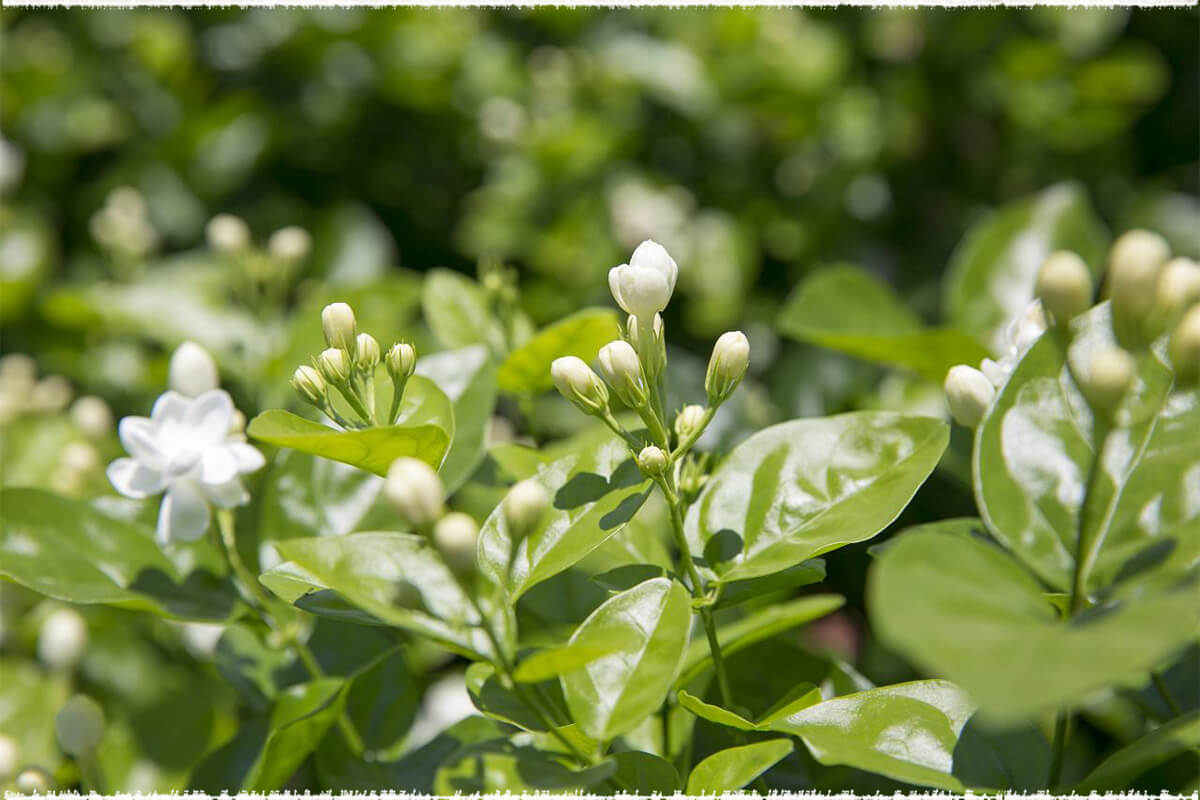
In general, there are three main categories for the jasmine cultivars: single-petal jasmine, double-petal jasmine and multi-petal jasmine.
The leaves used for scenting are usually single-petal and double-petal jasmine. Among them, due to the yield of single-petal jasmine is very low, so most jasmine tea on the market is scented with double-petal cultivar that leads a more robust fragrance.
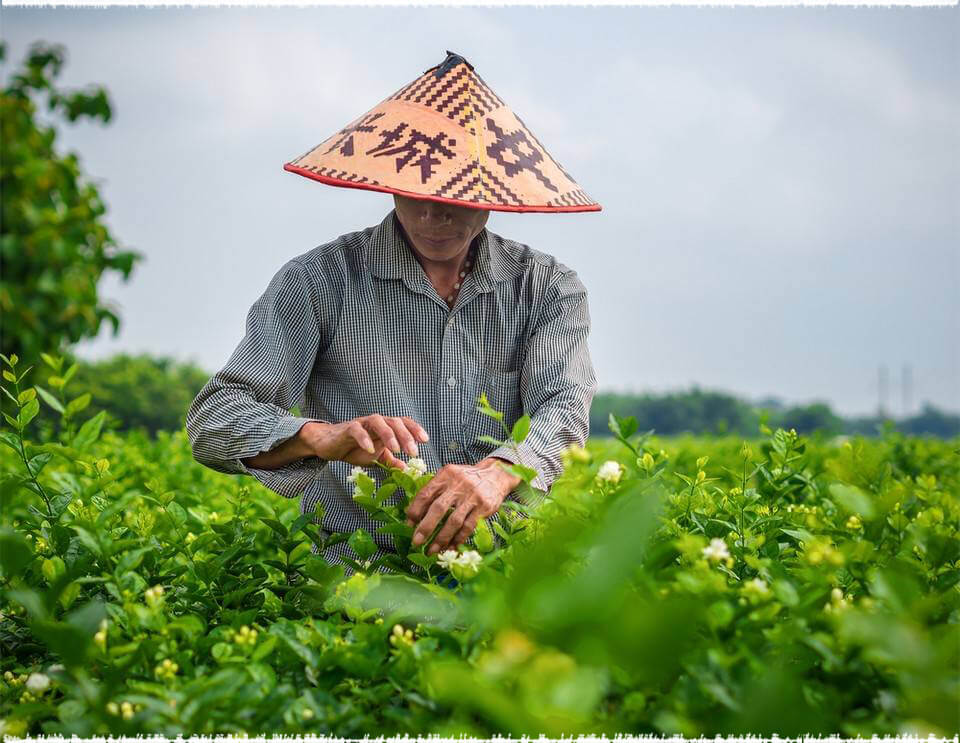
fresh jasmine flowers.
The fragrance of jasmine flower is a kind of refreshing and uplifting. When brewing, it offers a refreshing and sweet taste, as if you’re in the flower sea of spring.
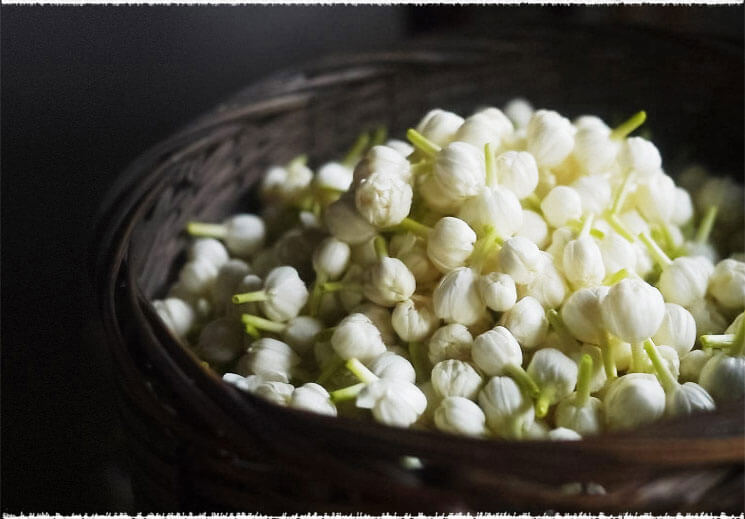
About 1kg fresh jasmine flowers can be picked in an hour.
For jasmine tea, it sounds like it’s just as simple as attaching the floral notes to tea leaves. But in fact, the transformation from jasmine into jasmine tea requires a series of processes, including: picking, maintaining the flowers, Sieving of Flower, Ventilation (Tong Hua),Separate the flower (Qi Hua), Drying, Final scenting (Ti Hua) and so on.

The flowers that are bloomed from July to September are called Fuhua (Fuhua means flower blooms in late summer), which carry the highest degree of essential oil and the best aroma. It is said that the best picking time of jasmine flower is between 2-3 pm, which is also the hottest day of this season.

The newly picked jasmine flowers need to be carefully handled into the bamboo basket to ensure that they are breathable. During this process, the flowers will slightly open further, like the shape of “tiger claw”, which means they are ready to scent the green tea.
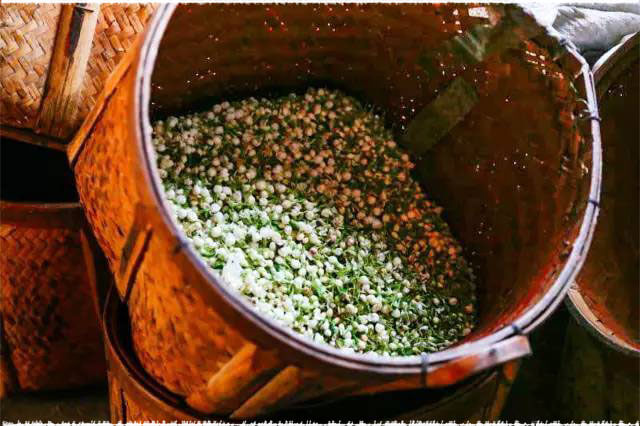
The process of scenting is like taking care of babies until the early morning.
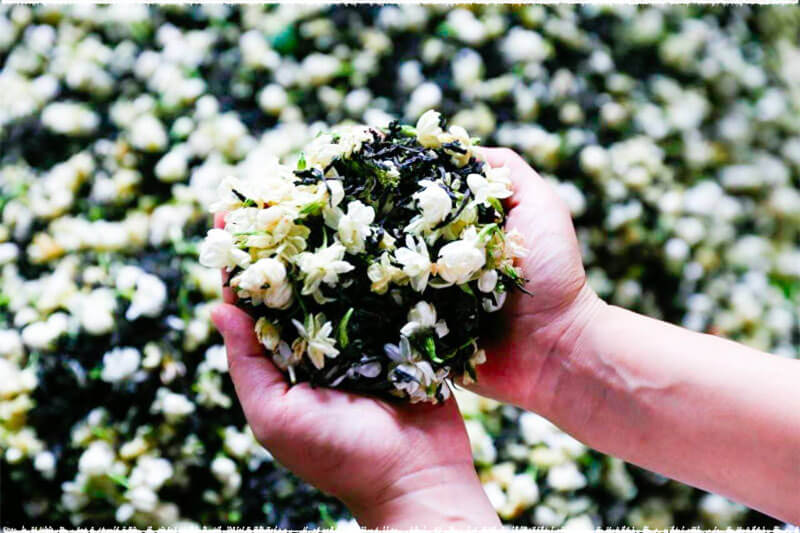
Handmade scenting process.
Scenting is a process that thoroughly mixes the jasmine flowers and tea, and then all of the fragrance will be transferred from the blossoms to the tea. It takes about 10 hours and requires very precise temperature and water control.

Once the scenting is accomplished in the morning, the tea and flowers have to be separated. The first scenting tea will be dried to reduce the moisture content in order to wait for the subsequent scenting processes.
In order to retain most of its fragrance, the tea leaves and jasmine flowers are mixed for one more scenting, and afterwards do not undergo any further drying. This process called final scenting, known as Ti Hua in Chinese.
Usually, it takes 3 times re-scenting, but for high grade jasmine scented tea, it takes even more than 5 times re-scenting.
Once the flower have lost their aroma, they exhausted flower must be removed and thrown away.
In this way, the leaves of spring tea harvested in April, and then scented with best jasmine flowers blossom in August, it took a few months until we can make a cup of fresh and aromatic jasmine tea. When taking a sip, it yields a sweet aftertaste with floral notes that lingers from nose to your body, making you feel more comfortable and relaxed.
 Exploring the Charms of 2024 Spring Tea Garden with Angel
Exploring the Charms of 2024 Spring Tea Garden with Angel Yingde Black Tea
Yingde Black Tea Matcha vs. Green Tea Powder
Matcha vs. Green Tea Powder
